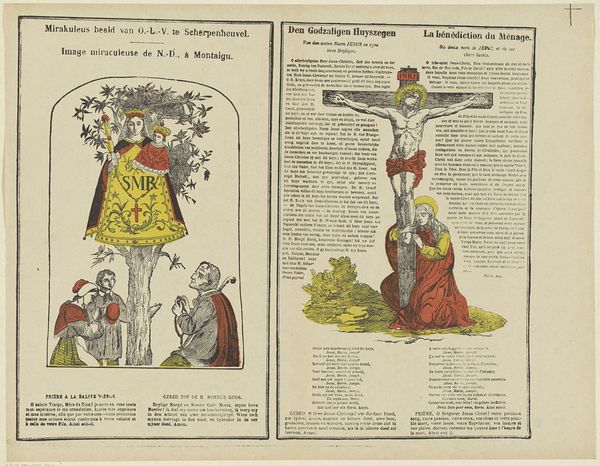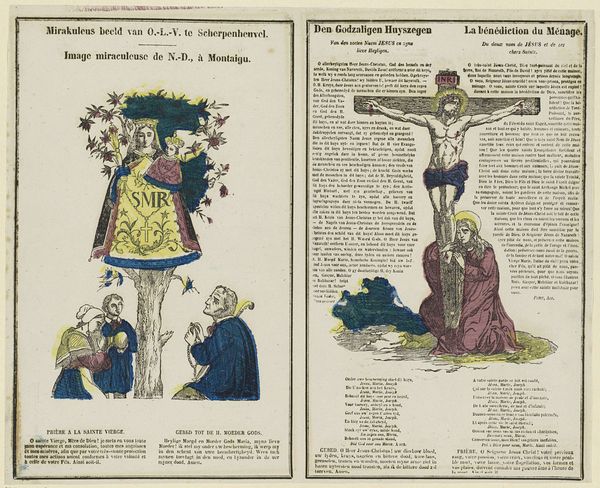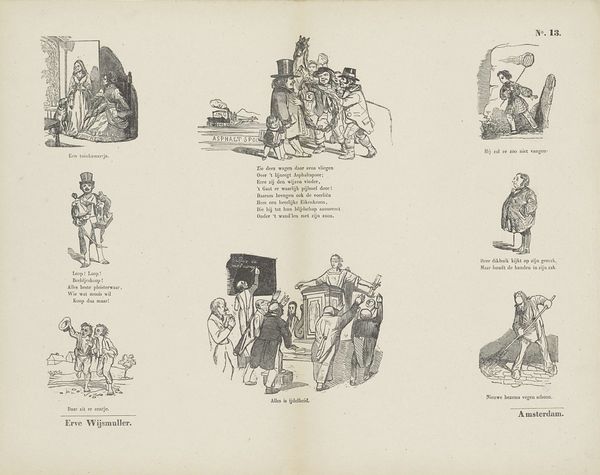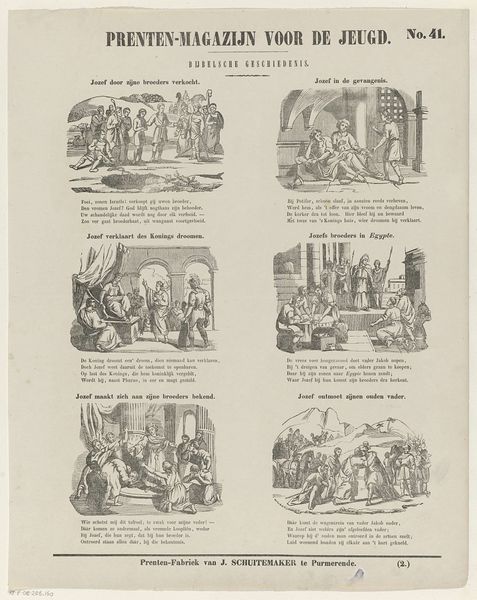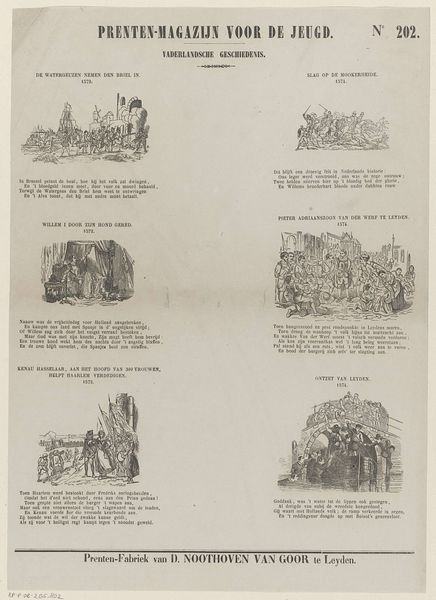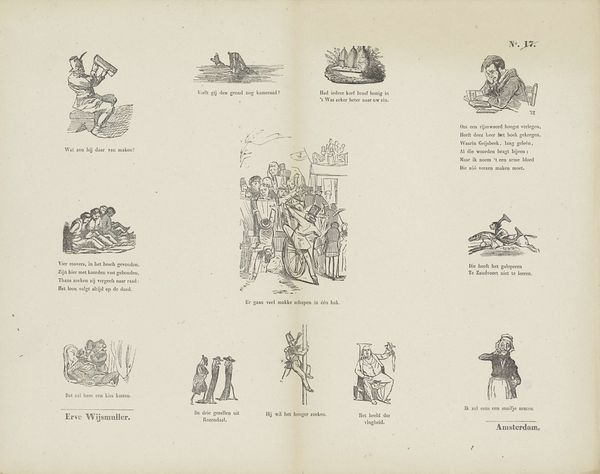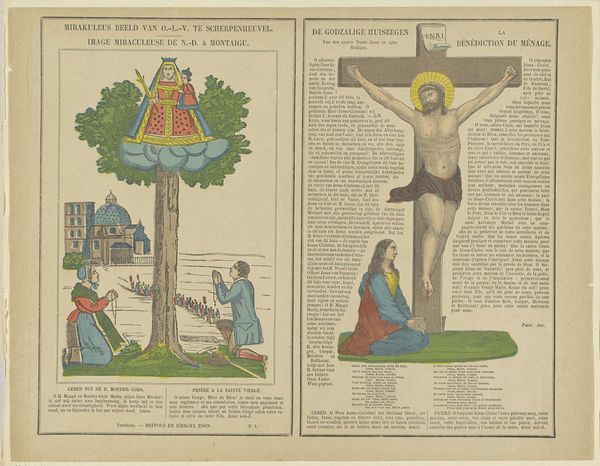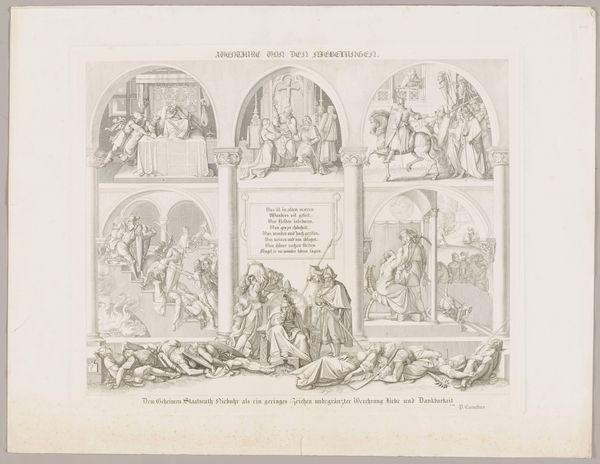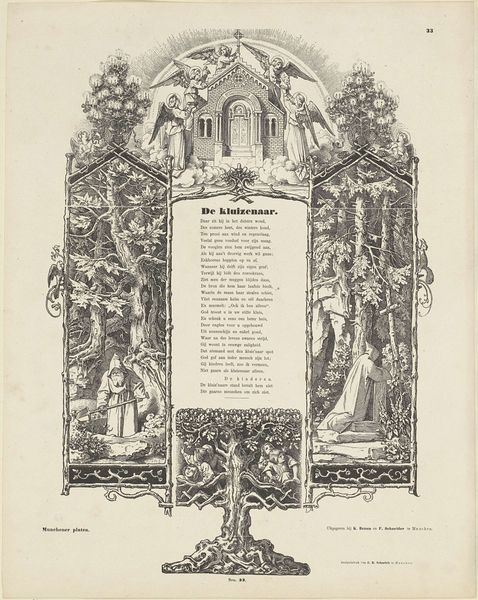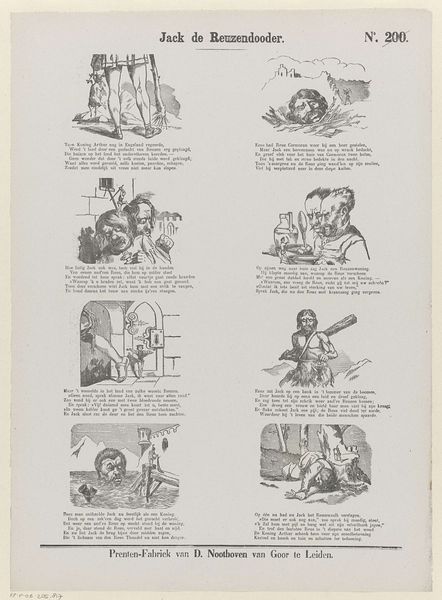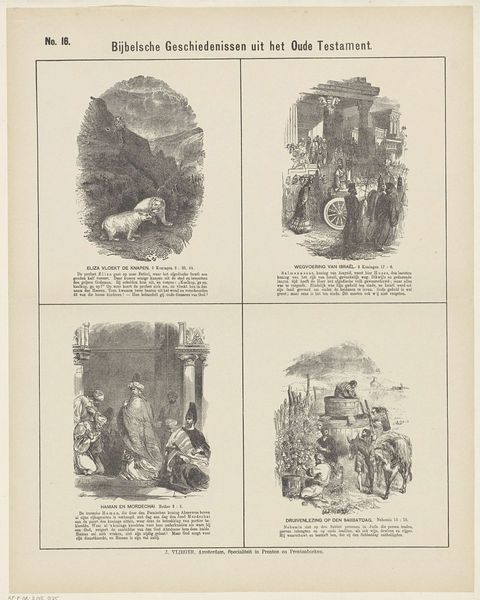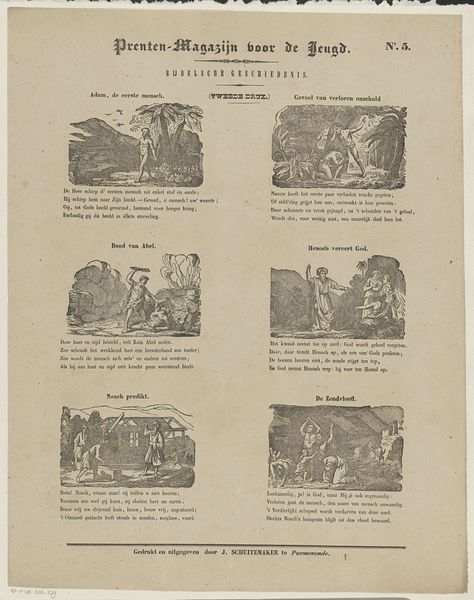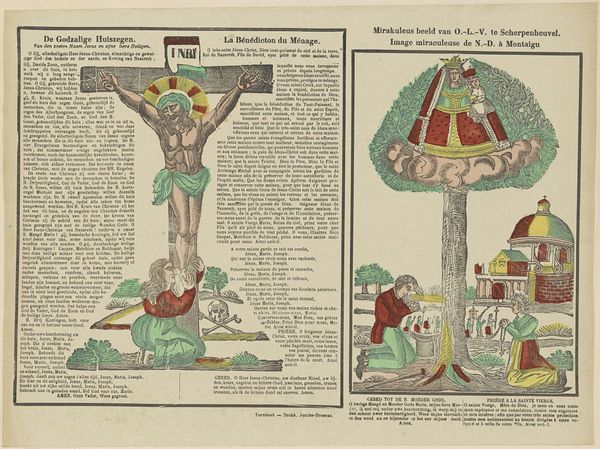
Mirakuleus beeld van O.-L.-V. te Scherpenheuvel / Image miraculeuse de N.-D., à Montaigu / Den Godzaligen Huyszegen / La bénédiction du Ménage 1827 - 1894
0:00
0:00
graphic-art, print, engraving
#
graphic-art
#
narrative-art
# print
#
old engraving style
#
engraving
Dimensions: height 330 mm, width 385 mm
Copyright: Rijks Museum: Open Domain
Curator: Let's discuss this intriguing print titled "Mirakuleus beeld van O.-L.-V. te Scherpenheuvel / Image miraculeuse de N.-D., à Montaigu / Den Godzaligen Huyszegen / La bénédiction du Ménage". It is attributed to M. Hemeleers-van Houter and is housed in the Rijksmuseum. It’s catalogued as dating from between 1827 and 1894. The artwork presents two religious images, side-by-side. One appears to depict the Virgin Mary as an icon within a shrine or tabernacle being venerated, and the other illustrates Christ on the cross with another religious figure. What is your immediate reaction? Editor: My immediate sense is of two different emotional registers side-by-side: hope and despair. The left image seems focused on Marian veneration as a conduit for positive blessings, judging by the praying figures and the image of a Virgin Mary elevated on what seems to be a tree trunk, festooned with foliage, suggesting renewal and perhaps intercession. In sharp contrast, the second panel with Christ crucified emphasizes sacrifice and somber grief. Curator: Indeed, and this contrast gets to the core of nineteenth-century religious imagery. In an era characterized by political and social upheaval, the Church was often a source of comfort and also social authority, often portraying religious stories to provide stability to the public and reinforce conventional ideas about morality. What is really captivating is the blending of languages, this truly was made for a public audience and intended for wide consumption. Editor: Absolutely. Looking closer, I'm fascinated by the symbol of the letters 'SMR' on the central icon. Most likely, the initials abbreviate the title, Sub Matris Reflexio—Under the Reflection of the Mother which may designate that the representation comes under the Virgin’s spiritual shelter or perhaps alludes to the icon's power. I'm also interested in the specific choice of portraying Christ in such a mournful and desperate way as this was made to imprint lasting messages for the faithful to contemplate their souls, which makes you wonder if those who were religious back then had less hopeful beliefs. Curator: It’s interesting to consider the social environment of those times. The artist uses fairly common symbology. The image on the left is interesting with its incorporation of flora in a way it represents both heaven and the natural world. The one to the right also feels pretty common as the posture, body structure, and cloth representation are something easily reproducible in multiple formats, but still, the artwork transmits complex messages in its crude symbolism that could make some religious people more hopeful while bringing down their faith depending on their mindset. Editor: I appreciate this work for bringing together those complex cultural memories tied to specific devotional figures but it also gives me a very contrasting view as I don't consider both of them so contrasting and the visual symbolism helps cement their meanings into popular conscience, something you only get to see when taking both images at the same time as they are very visually descriptive but very shallow in its symbolic significance.
Comments
No comments
Be the first to comment and join the conversation on the ultimate creative platform.
